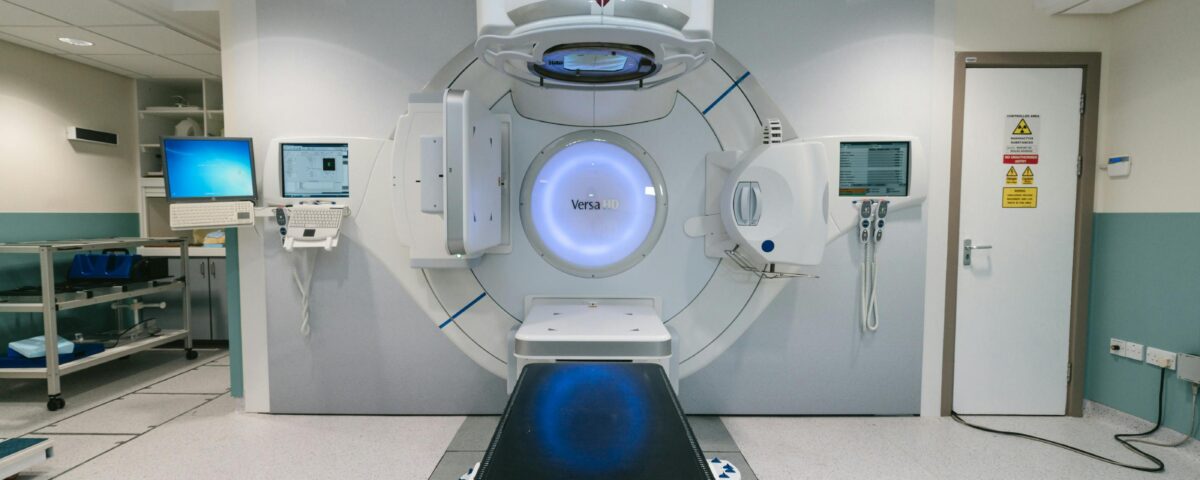
Coping Strategies for Managing Anxiety in Everyday Situations
October 6, 2025
Best Gynecology Health Screenings for Women
October 6, 2025Radiation therapy is a key part of many cancer treatment plans. For decades, medical professionals have used radiation to target and damage cancer cells. Today, it stands as one of the most common treatments, often used alongside other therapies to manage various types of cancer. Understanding its function can help you feel more informed about modern cancer care.
How Does Radiation Therapy Work?
Radiation therapy utilizes high-energy particles or waves to target and destroy cancer cells. The process works by damaging the genetic material within these cells, which stops them from growing and dividing. This damage leads to cell death. Healthy cells in the treatment area typically have better mechanisms for repairing themselves than cancer cells do.
A medical team plans the treatment to focus the radiation on the tumor while minimizing exposure to surrounding healthy tissue. The treatment schedule, known as fractionation, delivers radiation in a series of sessions over several days or weeks. This approach gives healthy cells time to recover between treatments. The specific plan, including the dose and frequency, is tailored to each individual’s situation.
What Types of Cancer Benefit?
Radiation can be a treatment option for many different kinds of cancer. It may be used with the intent to cure the cancer, to shrink a tumor before surgery, or to destroy any remaining cancer cells after surgery. It can also be used to relieve symptoms caused by advanced cancer.
The application depends on the type of cancer, its location, and whether it has spread. Below are some cancers for which radiation therapy is frequently used.
- Breast Cancer: Radiation is often used after a lumpectomy to destroy any remaining cancer cells in the breast, reducing the chance of recurrence.
- Prostate Cancer: It can be used as a primary treatment for cancer that is confined to the prostate gland or to manage symptoms if the cancer has spread.
- Lung Cancer: For some lung cancers, radiation may be the main treatment, sometimes combined with chemotherapy. It can also help to alleviate symptoms such as pain or breathing difficulties.
- Head and Neck Cancers: Radiation therapy, alone or with chemotherapy, is a standard treatment for many cancers in the head and neck region.
- Brain Tumors: This therapy can target tumors in the brain, shrinking them or slowing their growth to manage symptoms and improve function.
These examples illustrate how different circumstances benefit from radiation. The goal is always to deliver a therapeutic dose to the cancerous area while minimizing damage to nearby tissues as much as possible.
How Has Technology Improved Precision?
Technological advancements have significantly altered the delivery of radiation therapy. Modern techniques enable more precise targeting of tumors, thereby reducing the impact on healthy tissues. This precision is a result of improved imaging and treatment delivery systems.
One such advancement is intensity-modulated radiation therapy (IMRT). IMRT uses advanced software to plan a precise dose of radiation that conforms to the three-dimensional shape of the tumor. Another technique, stereotactic radiosurgery (SRS), delivers high doses of radiation to small, well-defined tumors with extreme accuracy, often in a single session or a few sessions. These technologies allow medical teams to treat complex tumors that were once difficult to manage.
Consult a Specialist
Navigating a cancer diagnosis involves learning about various treatment options. This information provides a general overview of radiation therapy, but it is not a substitute for professional medical advice. A qualified oncologist or radiation oncologist can explain how these treatments may apply to your specific health situation. They can review your medical history, discuss the potential benefits and risks, and assist you in making an informed decision. We encourage you to speak with a specialist to get personalized guidance for your health journey.





